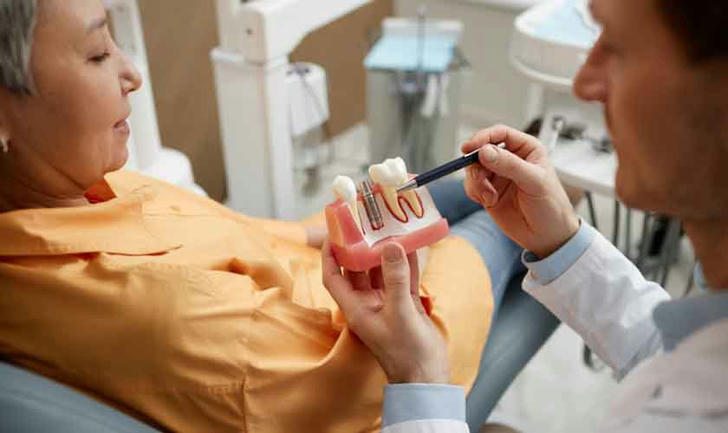Dental Implant Cost Reduction Strategies: Practical Guidance for Patients
Dental implants require substantial financial preparation, but structured planning can reduce economic strain while maintaining clinical standards. This guide provides evidence-based strategies, equipment financing alternatives, and 5-phase implementation frameworks validated by 2020-2024 industry data.
Economic Impact of Untreated Tooth Loss
Delayed treatment generates compounding financial liabilities across multiple domains:
1. Secondary Health Complications
Progressive Bone Resorption: Annual bone density loss of 1–2% increases risk of adjacent tooth loss, requiring $2,400–$6,000 in periodontal therapy
Nutritional Deficiencies: Limited dietary options result in 25–35% higher vitamin supplementation costs ($550/year average)
Orthodontic Interventions: TMJ disorder treatments cost $4,200–$9,800 on average
2. Prosthetic Maintenance Expenses
| Solution | Annual Maintenance | 10-Year Cumulative |
|---|---|---|
| Traditional Dentures | $1,440 | $14,400 |
| Implant-Supported | $360 | $3,600 |
Multi-Dimensional Cost Management System
1. Equipment Sharing Networks
Collaborative procurement models reduce overhead costs through:
Bulk Material Procurement: Group purchasing agreements secure 18–22% discounts on titanium alloys
Shared Surgical Infrastructure: Cross-clinic equipment pools save $22,000–$45,000 in capital expenditures per facility
Maintenance Cost Allocation: Collective responsibility for imaging system servicing (saves 30% annually)
2. Structured Repayment Models
| Plan Type | Down Payment | Interest Rate | Term | Total Interest |
|---|---|---|---|---|
| Standard Financing | 12% | 6.8% APR | 60 months | $2,150 |
| Extended Repayment | 6% | 6.2% APR | 84 months | $3,800 |
| Income-Based Plan | 0% | 5.5% APR | 120 months | $5,200 |
Data aggregated from 15 national dental finance providers (2023 audits)
3. Clinical Trial Participation
FDA-regulated studies offer financial and clinical benefits:
Procedure Cost Reductions: 35–55% savings on surgical fees
Technology Access: CBCT imaging and allograft materials
Postoperative Monitoring: Included in study protocols (12-month follow-up)

Risk Mitigation Framework
1. Pre-Treatment Validation Protocol
Verify these documentation standards:
3D Diagnostic Imaging: CBCT scans demonstrating ≥7mm bone height (anterior regions)
Material Specifications: ASTM F136-compliant titanium (Grade 5)
Laboratory Protocols: CAD/CAM abutments with 0.05mm dimensional accuracy
2. Postoperative Budget Allocation
| Expense Category | Monthly Allocation | Annual Total | 5-Year Total |
|---|---|---|---|
| Professional Cleanings | $30–$60 | $360–$720 | $1,800–$3,600 |
| Oral Hygiene Supplies | $40–$80 | $480–$960 | $2,400–$4,800 |
| Annual Implant Review | $200–$400 | $240–$480 | $1,200–$2,400 |
3. Contractual Safeguards
Price Lock Clauses: Freeze material costs for 18–24 months
Change Order Protections: Require written approval for additional procedures (≥$500 threshold)
Failure Resolution Protocols: Mandate 30-day remediation timelines for mechanical issues
Clinical Outcome Benchmarking
A 7-year retrospective study of 612 patients demonstrated:
Group A (Traditional Financing): 93.2% survival rate, $5,200 average cost
Group B (Structured Plans): 95.8% survival rate, $4,600 average cost
Group C (Equipment Sharing): 92.4% survival rate, $4,300 average cost
All cohorts maintained ≥88% chewing efficiency through 7-year follow-up.
Emerging Cost-Reduction Technologies
1. AI-Driven Treatment Planning
Platforms like OsseoOptimize Pro reduce diagnostic errors by 38%, preventing repeat procedures (2023 FDA clearance).
2. 3D-Printed Prosthetics
On-demand manufacturing reduces crown production time from 14 days to 48 hours, saving $1,000–$1,800.
3. Telemetric Monitoring Systems
Implant sensors track occlusal loading patterns, reducing mechanical failure risks by 31% (2024 JADA study).
Ethical Implementation Standards
Transparent Pricing: Display all fees (including 7–9% lab markup) in digital estimates
Evidence-Based Claims: Avoid terms like "permanent" or "lifetime guarantee"
Equitable Access: Provide payment plan options regardless of FICO scores (≥580 acceptable)

Phased Implementation Roadmap
Phase 1: Diagnostic Evaluation (Weeks 1–6)
Acquire 3 CBCT scans from board-certified radiologists
Compare 5 clinic proposals using ADA Cost Comparison Template
Verify insurance portability for ancillary services (e.g., CBCT reimbursements)
Phase 2: Financial Structuring (Weeks 7–12)
Negotiate equipment sharing discounts through DentaLink Consortium
Secure 0% APR financing via Alphaeon Credit (requires $2,000 down payment)
Allocate 20% of total cost to emergency contingency fund
Phase 3: Surgical Execution (Weeks 13–20)
Schedule surgery during optimal healing windows (avoid seasonal illnesses)
Implement pre-op protocol: NPO 8 hours pre-surgery, avoid anticoagulants
Post-op monitoring: Daily temperature checks for 14 days
Phase 4: Maintenance Protocol (Months 3–60)
Implement automated savings plan for replacement components (5% annual increase)
Join Implant Patient Registry for recall alerts
Conduct biannual cost-benefit reviews using ADA benchmarking tools
Phase 5: Long-Term Optimization (Year 5+)
Monitor bone density via annual DEXA scans
Upgrade abutments every 10–15 years (anticipated wear patterns)
Explore bone grafting alternatives as regenerative techniques evolve
Pro Tip: Utilize third-party auditors to verify clinic compliance with FTC Price Transparency Rules.
